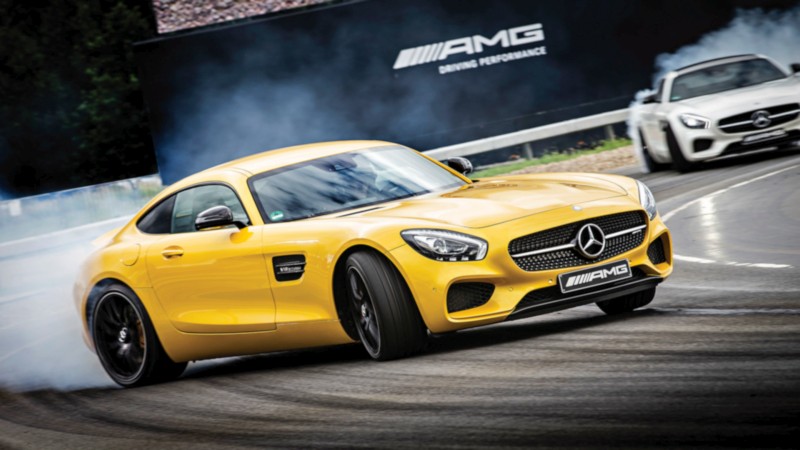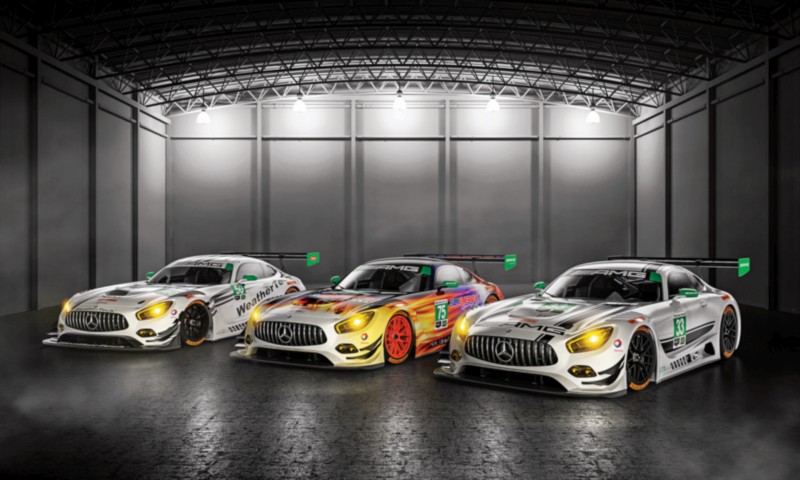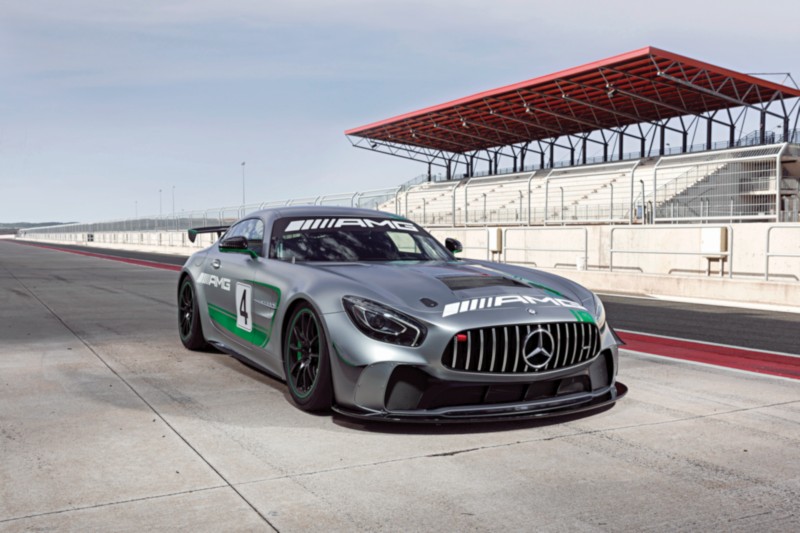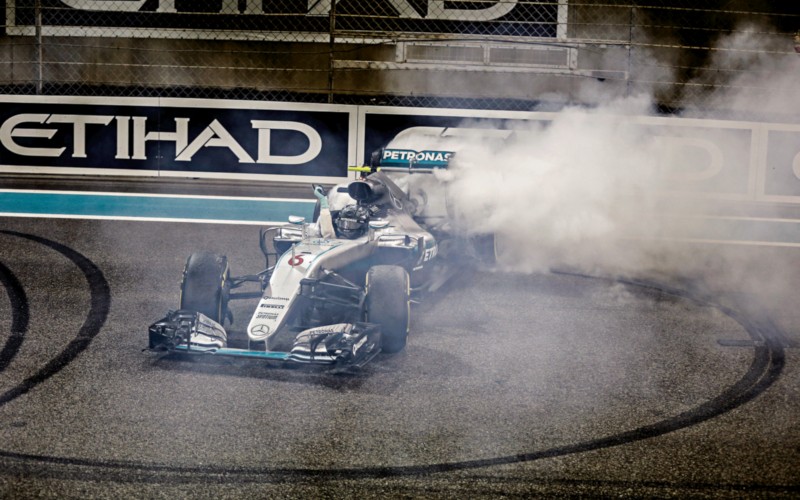Customer Racing
With the GT, Mercedes-AMG aren’t just targeting customers for the road, they’re just as keen to get more cars racing on track. The racing programme delivers track-only examples fine-tuned for maximum performance.
Mercedes-AMG GT3
First shown at the 2015 Geneva Motor Show, the Mercedes-AMG GT3 marked the marque’s latest offering to the world of customer motor-racing. Powered by none other than the M159 6.2-litre naturally-aspirated hand-built brute of a motor, the race cars are built to the tight FIA GT rules.
Not only was the GT3 raw power in a compact package, it was the first car from the brand to use the new ‘Panamericana’ front grille, turning up the aggression several notches. Not a face to be messed with, that’s for sure. The car is wider, too, and packs lightweight 18-inch alloy wheels with centre-locking wheel-nuts. Air inlets are located ahead of the rear wheels to assist with cooling of the rear brakes. Right in front of them are the side exhaust pipe — barely muffled for that signature AMG eight-cylinder thunder.
Mercedes-AMG GT4
With deliveries set for the end of this year, the Mercedes-AMG GT4 faces an intense test — over 30,000 kilometres of it. It has already proved its endurance and durability in a 30-hour test at full race speed at the Lausitzring.
The Mercedes-AMG GT4 is powered by the 4.0 litre V8 BiTurbo engine with direct fuel injection from the road cars. With proven production technology for the front-mid engine, it allows for particularly long service intervals and also provides sufficient performance reserves for the future. It can pump out up to 510 PS and 600 Nm. Power goes through an AMG six-speed sequential-shift competition gearbox. With just 1,390 kg to propel, the GT4 manages the sprint from 0 to 100 km/h in less than four seconds, with a top speed of over 250 km/h. A 120-litre fuel tank takes care of race distance over each of the two race days.
AMG GT S Safety Car
Since 2015, the AMG GT S has been the Safety Car for the pinnacle of motor racing, Formula 1, as well as the German Touring Car Championship, or Deutsche Tourenwagen Meisterschaft (DTM). With its precise handling and quick acceleration, it ably replaces the SLS AMG GT that played this role in the previous years of racing. The F1 Medical Car continues to be the blindingly fast, yet immensely capable Mercedes-AMG C 63 T-Modell high-performance estate.
Mercedes-AMG in Formula 1
With Lewis Hamilton moving to the factory Mercedes-AMG F1 team in 2013, things looked promising. He scored his five pole positions as well as his first and only victory that year in Hungary, ending up finishing fourth in the drivers’ championship. His team-mate, Nico Rosberg, who had been with the returning works team since 2010, managed three pole positions and two race victories at two prestigious venues: Monaco and Silverstone. The team finished second in the constructors’ championship.
Formula 1 went through its biggest change in recent years in 2014, moving to smaller 1.6-litre turbocharged V6 hybrid power units. The future was uncertain for all the big names. Mercedes-AMG F1 absolutely dominated the entire year clinching both the drivers’ and constructors’ world titles. Out of 19 races, the team had 18 pole positions and 16 race wins. Lewis Hamilton clinched the title with 11 wins and five podiums, with Rosberg a close second, five wins and 10 podiums in his kitty.
The following year, 2015, was another silver-wash with the team repeating the feat of 18 victories. However, this time their reliability was greater and Hamilton once again took the world championship with 11 pole positions, 110 victories, and seven podiums. Rosberg was in second position, with his highs coming towards the end of the season. Even so, he managed seven pole positions, six of which were consecutive in the last six races of the season, as well as six race victories and nine podium finishes.
In 2016, it was Rosberg’s turn to shine. He took four of his nine race wins in a row. Hamilton managed two four-race winning streaks out of his 10 race wins. It was Rosberg’s reliability, however, that determined the results. Just five points separated the German from the three-time world champion team-mate at the end, a sweet victory, and the one he had long wanted. Following his first and only world championship, he announced his retirement from F1.
























Leave a Reply